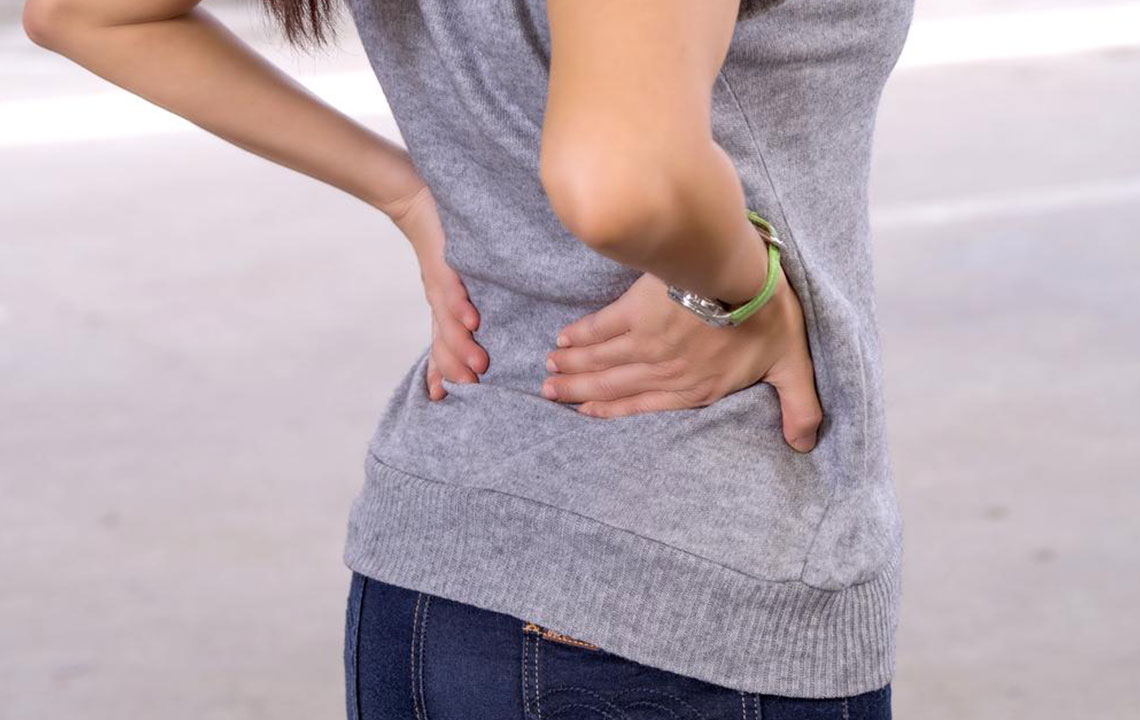Back Pain on the Right Side – Types and Treatments

The most common cause of back pain on the right side is the straining of muscles. Back pain could sometimes occur due to serious medical conditions. So it is very important to understand the root cause of the same. This would allow one to know whether this has occurred due to a serious underlying condition.
Primary types of back pain on the right side:
Acute Back Pain:
Acute back pain occurs in specific situations. This is the most common type of back pain. It has a sudden onset and could be sharp and intense.
Chronic Back Pain:
Chronic pain afflicts one for a longer duration. It is often not as intense as acute back pain. This type may be consistent in some rare cases.
What causes back pain towards the right side:
An infection of the urinary tract:
This is a common cause of back pain which occurs towards the right side. It occurs due to an infection in bladder, kidney or urethra.
While back pain is a commonplace symptom, other symptoms include:
- Stress over the pubic bone
- A sharp sensation during urination
- Frequent urination
- Slight fatigue
- Reduction in urine output
A scapular fracture towards the right side of the body:
When one suffers from a scapular fracture towards the right side of the body, it leads to pain. Such fractures arise in the shoulder blade. But these seldom arise.
In most cases, scapular fractures occur following an accidental fall. Some of the accompanying symptoms include:
- Reduction in movement of arm
- Swelling of shoulder
Strain in the lumbar muscle:
Strain in the Lumbar muscle could lead to a sharp back pain towards the right side. This often comes into play upon making a sharp movement. Or lumbar muscle strain could come to fore upon workouts such as lifting weights.
This pain could be:
- Sudden and intense
- It may increase over time
Some common symptoms of lumbar muscle strain include:
- Swelling
- Bruising
- Reduction in range of motion while bending towards the side
Slip Disc:
An arrangement of small bones called vertebrae safeguards the spinal cord. Between each of the adjacent vertebrae is a tissue of cartilage. These tissues make the spinal cord flexible and enable movement.
Sometimes the cartilage tissue protrudes from between two vertebrae. Herniated or slipped disc is the name for this condition.
Herniated disc puts pressure on spinal nerves. This could lead to inflammation or cause pain.
Bad Posture:
When one has a proper posture, it minimizes strain upon the spine. Working on the computer for long hours is one of the situations which lead to a bad posture. Bad posture, in turn, could lead to back pain towards the right side.
Chronic bad posture could result in pain. Even if one has a bad posture for a short duration, it could result in pain, soreness or spasms.
Gallbladder Problems:
Gallbladder problems could result in back pain towards the right side. Some of the most frequent underlying causes of the same are:
- Inflammation of the gallbladder
- Gallstones
This pain is often focused towards middle right part of the back. It can extend right up to the shoulders.
Sciatica:
Sciatica is a common cause of back pain towards the right side. Sciatica nerves are in the lower back. These reach down to both legs.
The pain occurs when a herniated disc presses a sciatica nerve. This pain can extend down the leg.
Some simple ways of healing back pain:
Ice Pack:
Press an ice pack on the spot where the pain is. Apply and remove it in cycles of 20 minutes. Repeat 4 to 5 times.
You may choose to use the ice pack treatment for a few days or as required.
Simple changes in lifestyle:
For a few days, you must avoid doing anything which makes the pain worse. But while the pain lasts, one must avoid restricting oneself to bed.
Taking complete bed rest while one has a backache is likely to make the pain worse.
So one must resume the everyday lifestyle, but while making sure that one does not stress the back too much.
Heating Pad:
After a day or two of onset of back pain, you may choose to:
- Go for a hot bath
- Use a heating pad
Heat has a soothing effect on the body. It also opens up blood vessels and helps oxygen and nutrients reach the injured tissue.
Mild Exercise:
Some mild exercises each day while the pain lasts should help one heal a backache. The most helpful among these is walking. Slight stretching or gardening too may help.
Try out the above-mentioned remedies. These should help you relieve the discomfort and also speed up the healing process. However, if the pain persists, consult a doctor immediately.


